Transmitter Module Optimization for Wireless Power Transfer Systems with Single Transmitter to Multiple Receivers
Abstract
:1. Introduction
2. Theoretical Framework of Transmitter Module Optimization for S-M WPT Systems
2.1. Structure of the Proposed Framework
- In the optimization module, the optimizer gives an initial value of the design variables (i.e., the number of relative turns () and reference turns () for transmitter coil, the number of physical turns for each receiver coil (), and the input voltage ()) to the analysis module. Note that the and are the row number and column number of the FG in the discrete design domain for transmitter coil, as described in Figure A1 in Appendix A.
- In the analysis module, firstly, the optimizer makes a layout of the transmitter coil based on the transferred design variables (i.e., and ). Secondly, self-inductances and mutual inductances (between the generated transmitter coil and receiver coils) are evaluated. Then, the compensated capacitances ( and ) are set based on the concept of the resonance optimization for S-M WPT systems proposed by the author [27], which is newly introduced to the coil layout optimization. Determining the optimal compensated capacitances for S-M WPT systems that can minimize the reactive power and maximize the power transfer efficiency is crucial due to the very complicated mutual inductance among a transmitter and several receiver modules in S-M WPT systems. Finally, the electrical and structural performances (e.g., load voltage of each receiver module (), total power transfer efficiency (), and total transmitter coil mass ()) are calculated by the determined design parameters for S-M WPT systems. The resonance optimization for S-M WPT systems is not equal to the conventional resonance setting for S-S WPT systems [28,29,30,31,32].
- In the optimization module, the objective function (e.g., total power transfer efficiency in this paper), constraint functions (e.g., the load voltage of each receiver module and coil mass), and sensitivities are evaluated from the performances calculated in the analysis module. Then, if the convergence criteria are satisfied, the values of the design variables at the last iteration are determined as the optimal value of the design variables for the S-M WPT systems. If not, this process is continuous by using the design variables updated based on the sensitivities until the convergence criteria are satisfied.
2.2. Mathematical Derivation of the Proposed Method
2.2.1. Representation of the Transmitter Coil Layout
2.2.2. Electromagnetic and Structural Performance
3. Application: S-M WPT Systems with Two Receiver Modules
3.1. Model Description
3.2. Optimization for the Application Model
3.3. Experimental Validation
4. Conclusions
Author Contributions
Funding
Institutional Review Board Statement
Informed Consent Statement
Data Availability Statement
Acknowledgments
Conflicts of Interest
Appendix A

Appendix B
Appendix C
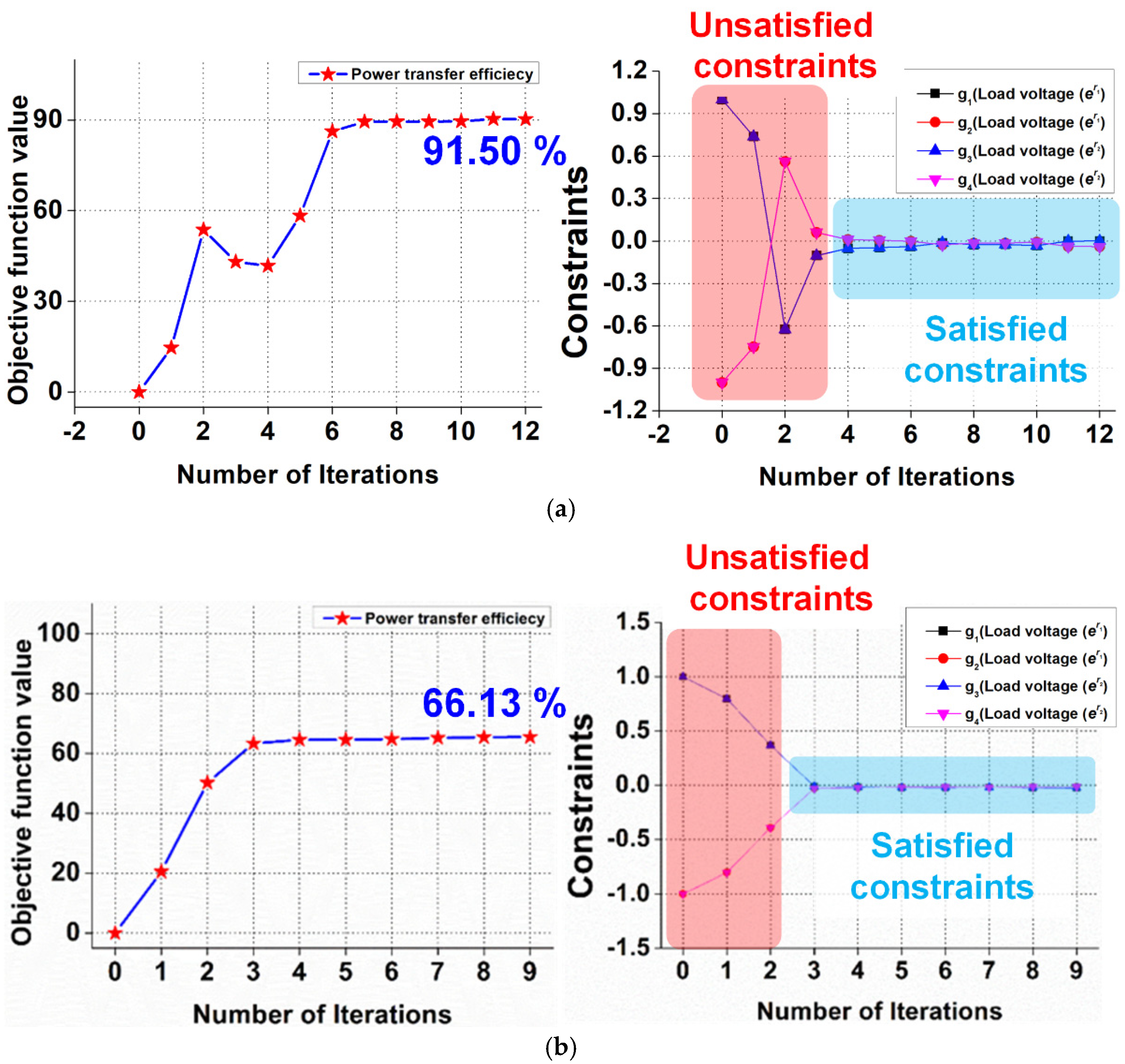
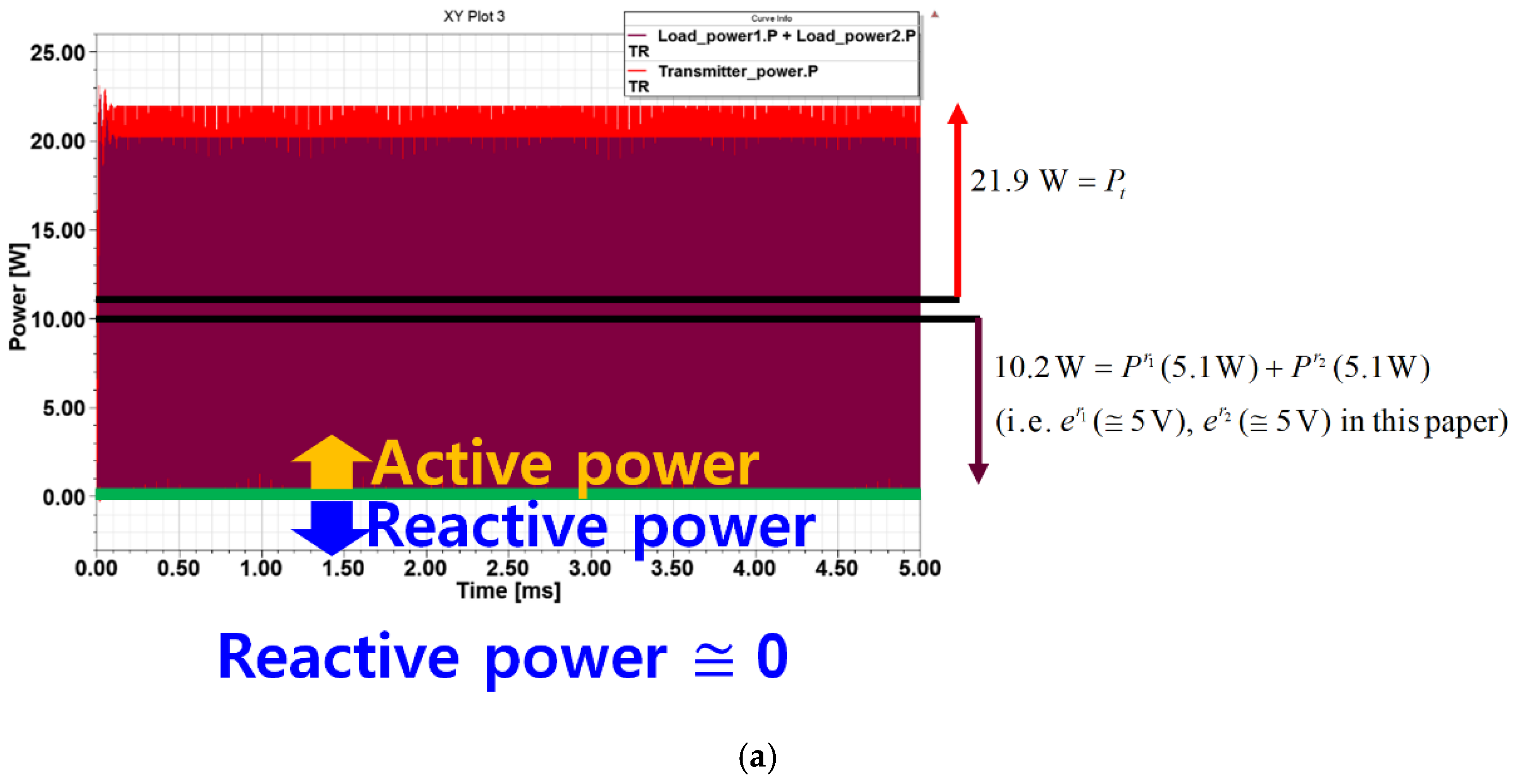
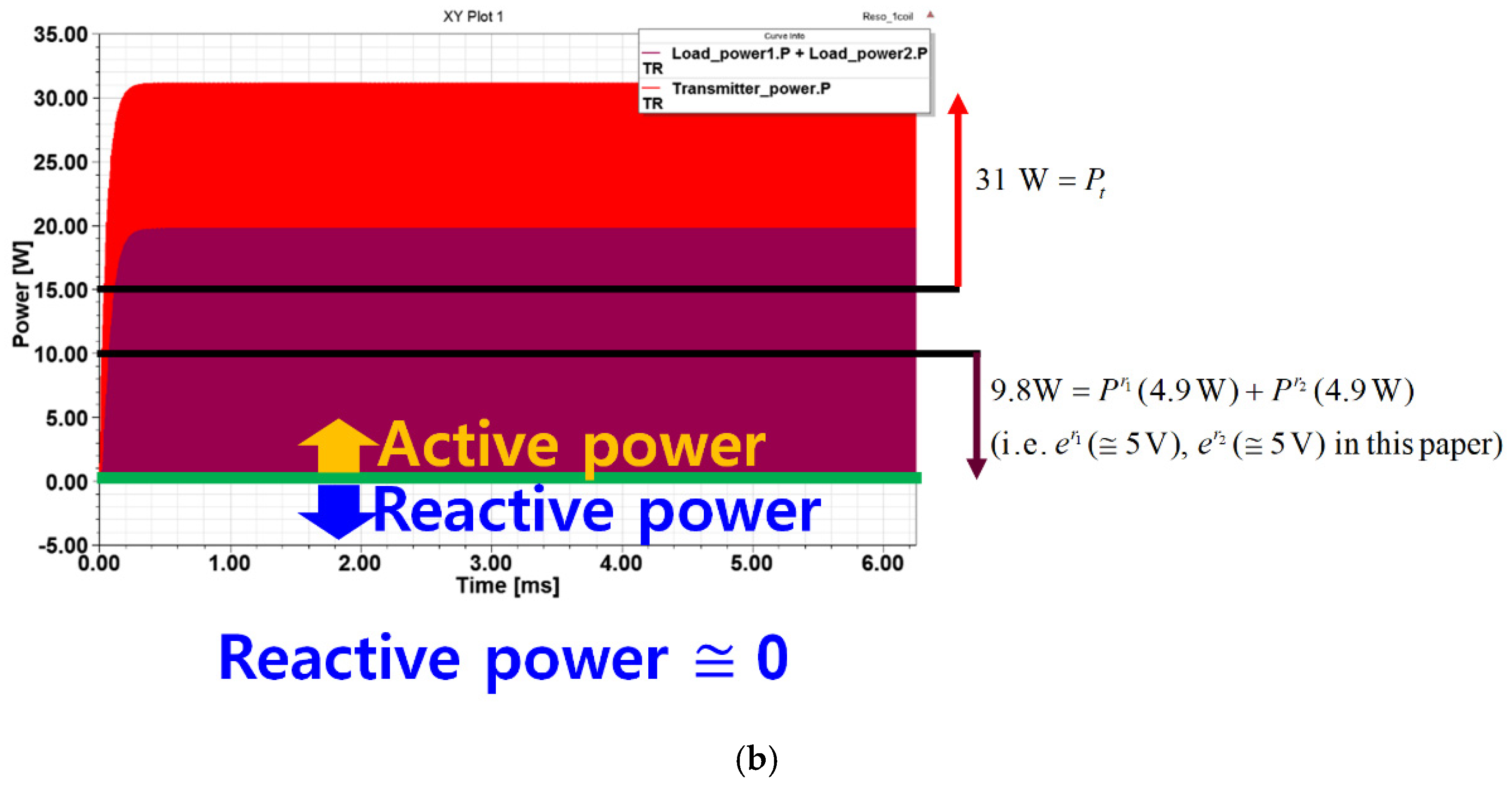
References
- Liu, Y.; Li, B.; Huang, M.; Chen, Z.; Zhang, X. An Overview of Regulation Topologies in Resonant Wireless Power Transfer Systems for Consumer Electronics or Bio-Implants. Energies 2018, 11, 1737. [Google Scholar] [CrossRef] [Green Version]
- Narayanamoorthi, R.; Juliet, A.V.; Chokkalingam, B. Frequency splitting-based wireless power transfer and simultaneous propulsion generation to multiple micro-robots. IEEE Sens. J. 2018, 18, 5566–5575. [Google Scholar] [CrossRef]
- Zhang, Z.; Zhang, B. Omnidirectional and efficient wireless power transfer system for logistic robots. IEEE Access 2020, 8, 13683–13693. [Google Scholar] [CrossRef]
- Sarin, A.; Avestruz, A.-T. Code division multiple access wireless power transfer for energy sharing in heterogenous robot swarms. IEEE Access 2020, 8, 132121–132133. [Google Scholar] [CrossRef]
- Lee, E.S.; Choi, B.G.; Kim, M.Y.; Han, S.H. Optimal number of turns design of the IPT coils for laptop wireless charging. IEEE Access 2021, 9, 19548–19561. [Google Scholar] [CrossRef]
- Mohamed, A.; Marim, A.A.; Mohammed, O. Magnetic design considerations of bidirectional inductive wireless power transfer system for EV applications. IEEE Trans. Magn. 2017, 53, 1–5. [Google Scholar] [CrossRef]
- Cota, K.A.; Gray, P.A.; Pathmanathan, M.; Lehn, P.W. An approach for selecting compensation capacitances in resonance-based EV wireless power transfer systems with switched capacitors. IEEE Trans. Transp. Electrif. 2019, 5, 1004–1014. [Google Scholar] [CrossRef]
- Zhang, Y.; Wang, L.; Guo, Y.; Tao, C. Null-coupled magnetic integration for EV wireless power transfer system. IEEE Trans. Transp. Electrif. 2019, 5, 968–976. [Google Scholar] [CrossRef]
- Lee, J.-Y.; Han, B.-M. A bidirectional wireless power transfer EV charger using self-resonant PWM. IEEE Trans. Power Electron. 2014, 30, 1784–1787. [Google Scholar] [CrossRef]
- Huang, C.; Kawajiri, T.; Ishikuro, H. A 13.56-MHz wireless power transfer system with enhanced load-transient response and efficiency by fully integrated wireless constant-idle-time control for biomedical implants. IEEE J. Solid State Circuits 2017, 53, 538–551. [Google Scholar] [CrossRef]
- Wang, Q.; Che, W.; Mongiardo, M.; Monti, G. Wireless power transfer system with high misalignment tolerance for bio-medical implants. IEEE Trans. Circuits Syst. II Express Br. 2020, 67, 3023–3027. [Google Scholar] [CrossRef]
- Basar, R.; Ahmad, M.Y.; Cho, J.; Ibrahim, F. An Improved wearable resonant wireless power transfer system for biomedical capsule endoscope. IEEE Trans. Ind. Electron. 2018, 65, 7772–7781. [Google Scholar] [CrossRef]
- Tran, D.H.; Vu, V.B.; Choi, W. Design of a high-efficiency wireless power transfer system with intermediate coils for the on-board chargers of electric vehicles. IEEE Trans. Power Electron. 2018, 33, 175–187. [Google Scholar] [CrossRef]
- Liu, X.; Wang, G. A novel wireless power transfer system with double intermediate resonant coils. IEEE Trans. Ind. Electron. 2015, 63, 2174–2180. [Google Scholar] [CrossRef]
- Chabalko, M.J.; Sample, A. Three-dimensional charging via multimode resonant cavity enabled wireless power transfer. IEEE Trans. Power Electron. 2015, 30, 6163–6173. [Google Scholar] [CrossRef]
- Zhong, W.; Zhang, C.; Liu, X.; Hui, S.Y.R. A methodology for making a three-coil wireless power transfer system more energy efficient than a two-coil counterpart for extended transfer distance. IEEE Trans. Power Electron. 2014, 30, 933–942. [Google Scholar] [CrossRef]
- Li, H.; Li, J.; Wang, K.; Chen, W.; Yang, X. A maximum efficiency point tracking control scheme for wireless power transfer systems using magnetic resonant coupling. IEEE Trans. Power Electron. 2015, 30, 3998–4008. [Google Scholar] [CrossRef]
- Moon, S.; Moon, G.-W. Wireless power transfer system with an asymmetric 4-coil resonator for electric vehicle battery chagers. In Proceedings of the IEEE Applied Power Electronics Conference and Exposition, Charlotte, NC, USA, 15–19 March 2015; pp. 1650–1657. [Google Scholar] [CrossRef]
- Choi, S.Y.; Gu, B.W.; Jeong, S.Y.; Rim, C.T. Advances in wireless power transfer systems for roadway-powered electric vehicles. IEEE J. Emerg. Sel. Top. Power Electron. 2015, 3, 18–36. [Google Scholar] [CrossRef]
- Bosshard, R.; Kolar, J.W.; Muhlethaler, J.; Stevanovic, I.; Wunsch, B.; Canales, F. Modeling and η–α-Pareto Optimization of inductive power transfer coils for electric vehicles. IEEE J. Emerg. Sel. Top. Power Electron. 2015, 3, 50–64. [Google Scholar] [CrossRef]
- Kim, H.; Song, C.; Kim, D.; Jung, D.H.; Kim, I.-M.; Kim, Y.-I.; Kim, J.; Ahn, S.; Kim, J. Coil design and measurements of automotive magnetic resonant wireless charging system for high-efficiency and low magnetic field leakage. IEEE Trans. Microw. Theory Tech. 2016, 64, 383–400. [Google Scholar] [CrossRef]
- Lee, S.B.; Ahn, S.; Jang, I.G. Development of the optimization framework for low-power wireless power transfer systems. IEEE Trans. Microw. Theory Tech. 2015, 63, 813–820. [Google Scholar] [CrossRef]
- Lee, S.B.; Ahn, S.; Jang, I.G. Simulation-based feasibility study on the wireless charging railway system with a ferriteless primary module. IEEE Trans. Veh. Technol. 2017, 66, 1004–1010. [Google Scholar] [CrossRef]
- Lee, S.B.; Jang, I.G. Layout optimization of the receiver coils for multitransmitter wireless power transfer systems. IEEE J. Emerg. Sel. Top. Power Electron. 2017, 5, 1311–1321. [Google Scholar] [CrossRef]
- Lee, S.B.; Lee, C.; Jang, I.G. Precise determination of the optimal coil for wireless power transfer systems through postprocessing in the smooth boundary representation. IEEE Trans. Magn. 2017, 53, 1–4. [Google Scholar] [CrossRef]
- Lee, S.B.; Jang, I.G. Coil layout optimization for maximizing the power transfer efficiency of wireless power transfer systems with multiple transmitter coils. IEEE J. Emerg. Sel. Top. Power Electron. 2019, 8, 2672–2681. [Google Scholar] [CrossRef]
- Lee, S.B.; Kim, M.; Jang, I.G. Determination of the optimal resonant condition for multireceiver wireless power transfer systems considering the transfer efficiency and different rated powers with altered coupling effects. IEEE J. Emerg. Sel. Top. Power Electron. 2021, 9, 2384–2393. [Google Scholar] [CrossRef]
- Kim, J.; Kim, D.-H.; Park, Y.-J. Analysis of capacitive impedance matching networks for simultaneous wireless power transfer to multiple devices. IEEE Trans. Ind. Electron. 2015, 62, 2807–2813. [Google Scholar] [CrossRef]
- Lim, Y.; Tang, H.; Lim, S.; Park, J. An adaptive impedance-matching network based on a novel capacitor matrix for wireless power transfer. IEEE Trans. Power Electron. 2014, 29, 4403–4413. [Google Scholar] [CrossRef]
- Beh, T.C.; Kato, M.; Imura, T.; Oh, S.; Hori, Y. Automated impedance matching system for robust wireless power transfer via magnetic resonance coupling. IEEE Trans. Ind. Electron. 2012, 60, 3689–3698. [Google Scholar] [CrossRef]
- Chen, L.; Liu, S.; Zhou, Y.C.; Cui, T.J. An optimizable circuit structure for high-efficiency wireless power transfer. IEEE Trans. Ind. Electron. 2013, 60, 339–349. [Google Scholar] [CrossRef]
- Ahn, D.; Hong, S. A study on magnetic field repeater in wireless power transfer. IEEE Trans. Ind. Electron. 2012, 60, 360–371. [Google Scholar] [CrossRef]
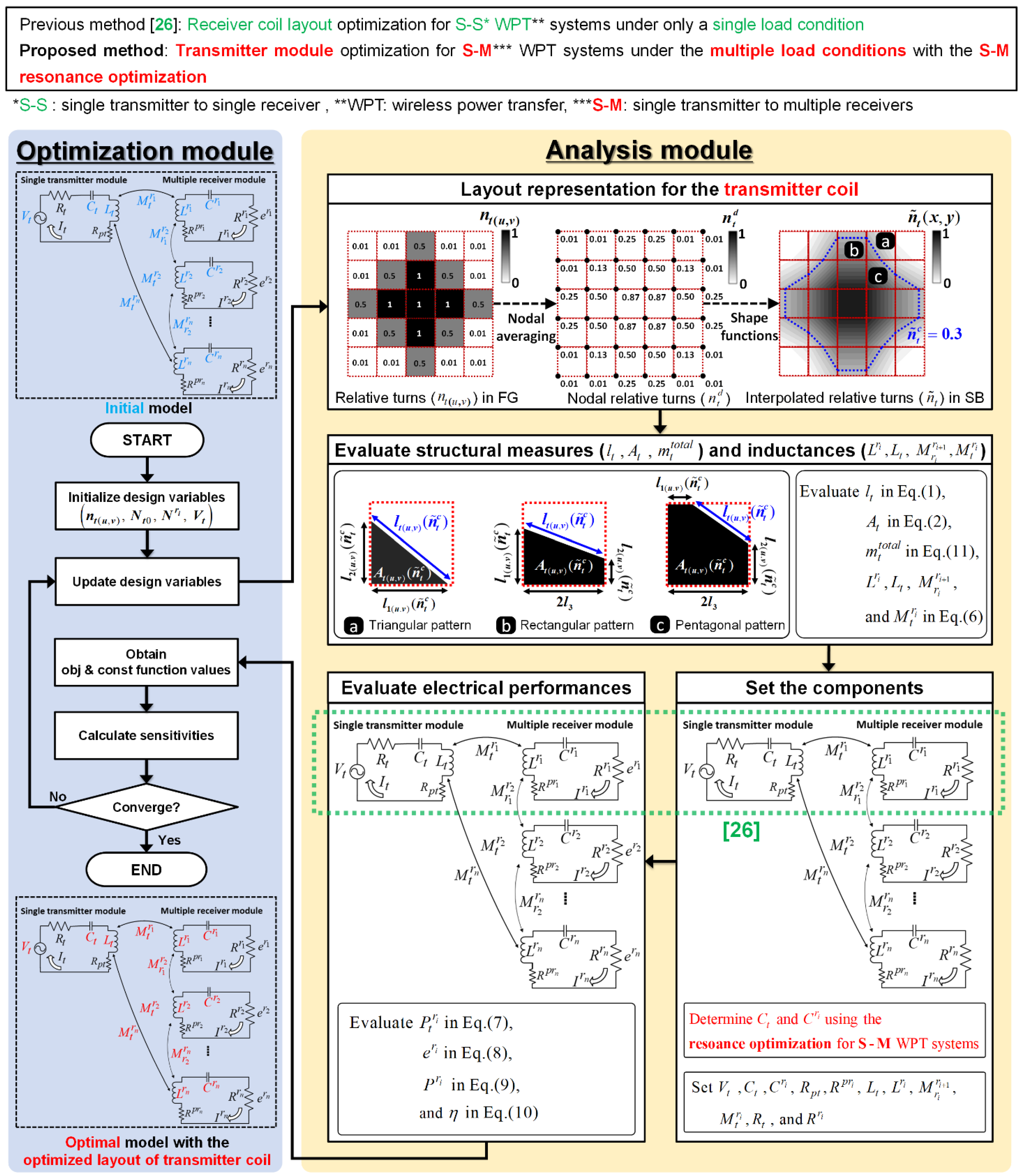



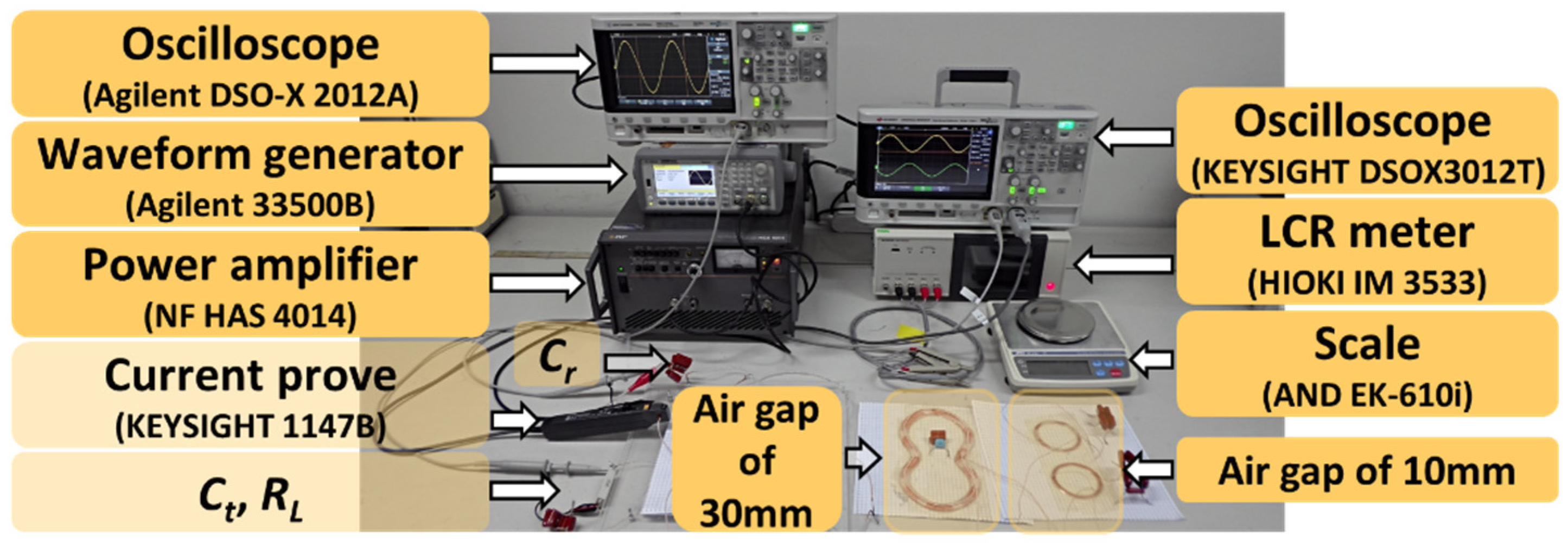
| Design Constants | Values |
|---|---|
| Resonance frequency (kHz) | 100.00 |
| Density of the coil (g/mm3) | 0.00896 |
| Cross-section area of the Litz wire (mm2) | 0.22 |
| Distance between the coils of two receiver module [G2] (mm) | 28.00 |
| Side length of each fixed grid [2l3] (mm) | 5.00 |
| Diameter of the receiver coils [l4] (mm) | 52.00 |
| Length of the design domain for the transmitter coil [l5] (mm) | 200.00 |
| Width of the design domain for the transmitter coil [l6] (mm) | 200.00 |
| Air Gap (mm) | (uH) | (uH) | (uH) | (uH) | (uH) | (uH) | (uH) | (uH) | (uH) | (uH) | (nF) | (nF) | (nF) | (V) |
|---|---|---|---|---|---|---|---|---|---|---|---|---|---|---|
| 10 | 38.48 | 38.48 | 25.45 | 25.45 | 0.99 | 12.10 | 0.54 | 0.54 | 12.10 | 0.37 | 42.53 | 131.6 | 131.4 | 18.41 |
| 30 | 98.08 | 0 | 25.45 | 25.45 | 0 | 4.24 | 4.24 | 0 | 0 | 0.37 | 26.14 | 117.2 | 120.6 | 10.15 |
| Air Gap (mm) | (V) | (V) | (g) | η (%) | ||||||||
|---|---|---|---|---|---|---|---|---|---|---|---|---|
| Op * | Ex ** | Er *** | Op | Ex | Er | Op | Ex | Er | Op | Ex | Er | |
| 10 | 5.10 | 4.99 | 2.20 | 5.07 | 5.01 | 1.19 | 46.34 | 50.25 | 7.79 | 91.50 | 86.24 | 6.10 |
| 30 | 5.04 | 4.91 | 2.65 | 4.92 | 4.90 | 0.41 | 50.64 | 54.78 | 8.17 | 66.13 | 71.51 | 8.12 |
Publisher’s Note: MDPI stays neutral with regard to jurisdictional claims in published maps and institutional affiliations. |
© 2021 by the authors. Licensee MDPI, Basel, Switzerland. This article is an open access article distributed under the terms and conditions of the Creative Commons Attribution (CC BY) license (https://creativecommons.org/licenses/by/4.0/).
Share and Cite
Lee, J.; Lee, S.B. Transmitter Module Optimization for Wireless Power Transfer Systems with Single Transmitter to Multiple Receivers. Mathematics 2021, 9, 2928. https://doi.org/10.3390/math9222928
Lee J, Lee SB. Transmitter Module Optimization for Wireless Power Transfer Systems with Single Transmitter to Multiple Receivers. Mathematics. 2021; 9(22):2928. https://doi.org/10.3390/math9222928
Chicago/Turabian StyleLee, Joungha, and Seung Beop Lee. 2021. "Transmitter Module Optimization for Wireless Power Transfer Systems with Single Transmitter to Multiple Receivers" Mathematics 9, no. 22: 2928. https://doi.org/10.3390/math9222928
APA StyleLee, J., & Lee, S. B. (2021). Transmitter Module Optimization for Wireless Power Transfer Systems with Single Transmitter to Multiple Receivers. Mathematics, 9(22), 2928. https://doi.org/10.3390/math9222928







